

2024-2029 HOC FIVE-YEAR STRATEGIC PLAN
INTRODUCTION
THE MONTGOMERY COUNTY HOUSING LANDSCAPE
HOC’S VISION AND MISSION
HOC’S CORE VALUES
NEW AND EXCITING
2024 - 2029 GOALS AND OBJECTIVES
GOAL 1: EXPANDING AFFORDABLE HOUSING
GOAL 2: ENHANCING LIVES THROUGH SUPPORTIVE SERVICES & PARTNERSHIPS
GOAL 3: EXCELLING AS A

TABLE OF CONTENTS 3 4 6 7 8 10 11 20 27 34
ACKNOWLEDGEMENTS
WORLD-CLASS ORGANIZATION
INTRODUCTION
Dear Friends of HOC,
Finding and affording a place to live is one of the toughest challenges faced by so many across the United States and housing has a direct correlation to so many key fundamental factors needed to have a good quality of life — health, education access, employment opportunities and so much more. The basic need of housing is particularly acute for our low- and moderate-income neighbors here in Montgomery County, where a fast-growing population has created an ever-increasing demand for affordable housing that hasn’t been met. This is why the deliberate work of HOC is needed more than ever before.
HOC has created this Five-Year Strategic Plan as a guide for focusing our work on meeting that need. We produced this plan by listening to what our customers and members of the community told us they need from HOC, taking a hard, critical look at what we as an agency have been doing, honestly identifying what we must do better and determining what actions we need to take to meet Montgomery County’s affordable housing needs and to help improve the lives of our customers.
This Five-Year Strategic Plan broadly describes what HOC will do during the next five years to provide more affordable housing and supportive services. Central to that effort is developing, training and equipping a world-class staff that always puts our customer needs first. Moreover, we will explore innovation in all that we do, to expand our reach and impact. These tenets will be our guide for developing the detailed Implementation Plan for how we will accomplish our goals and objectives. Built into the Implementation Plan will be the detailed, transparent reporting protocol HOC will implement to keep us accountable and all of our stakeholders informed of our progress in delivering on our promises.
Thank you to everyone who contributed their time, thoughts, ideas and energy to the development of this plan. With your support, we are committed to expanding affordable housing across our county, enhancing the lives of those we touch and excelling as a world-class organization. We look forward to working with you - and on behalf of you - to help shape the bright future of Montgomery County.
Together in the Mission,
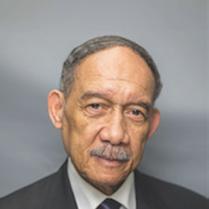
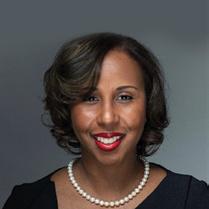 ROY PRIEST Chairman Housing Opportunities Commission CHELSEA ANDREWS President & Executive Director Housing Opportunities Commission
ROY PRIEST Chairman Housing Opportunities Commission CHELSEA ANDREWS President & Executive Director Housing Opportunities Commission
THE MONTGOMERY COUNTY HOUSING LANDSCAPE
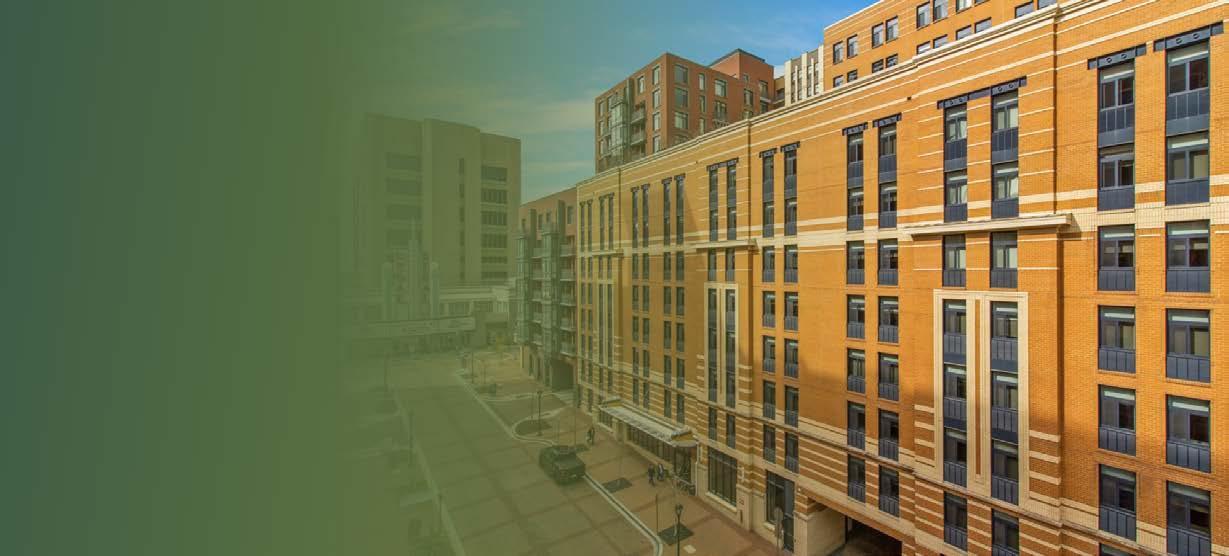
THE MONTGOMERY COUNTY HOUSING LANDSCAPE
With its combination of urban energy, suburban sophistication and the agricultural bucolic, it is understandable why Montgomery County is considered by so many to be a “best place to live.”
Add to that mix our proximity to the nation’s capital, ready access to culture and recreation,
FIGURE 1
educational and high-paying employment opportunities and it’s also easy to understand the county’s explosive population growth over the past several decades.
Montgomery County’s population roughly doubled from 1970 to 2020 (Figure 1). Estimates are that the county will add 60,000 new households between 2020 and 2040.1
4
1 Montgomery County Planning Board, Current demographic, economic, and housing market conditions, July 13, 2022 1970 1980 1990 2000 2010 2020 1,200,000 1,000,000 800,000 600,000 400,000 200,000 0 Population
1970-2020
Growth,
EVOLUTION OF THE HOUSEHOLD
Not only is Montgomery County’s population growing, it is becoming more diverse and older. Since 1990, individuals living alone and married couples without children have become the most common type of household.
Montgomery County’s increasingly diverse population is increasing the need for more multigenerational housing. Asian, Black, and Hispanic households are more likely than White households to live in multigenerational households. The aging population also is altering the need for — and the type of — housing stock in the county. The population’s median age increased nearly six full years from 33.9 in 1990 to 39.7 in 2021 and is getting increasingly older. The senior population aged 65 and over is projected to increase by 50% from 2020 to 2040.
Another dynamic shaping the Montgomery County housing landscape is the fact that rent has been — and is projected to continue — rising faster than home values and incomes, which is increasing the burden that housing costs place on the household budget (Figure 2).

5
130 125 120 115 110 100 95 10-Year Comparison of Trends in Rent and Incomes, Indexed FIGURE 2 2011 2016 2021 Income Rent
Providing safe, high-quality and affordable homes is only one part of the mission of the Housing Opportunities Commission. The other is to provide our customers with the supportive services — the opportunities — that will help them establish and maintain a healthy, secure home life and build a more secure future. Those services are and will be a foundational element of HOC’s work.
It is within this context that the Housing Opportunities Commission has crafted this Five-Year Strategic Plan to guide our work in creating the affordable housing opportunities our Montgomery County neighbors need to thrive. This plan includes new vision and mission statements for the agency, a set of core values that underpin our culture and decision making, and several high-level goals and objectives that will help us deliver on our mission.
THE PLANNING PROCESS AND HOW WE ARE CHARTING THE WAY FORWARD
For 10 months HOC critically analyzed what we do and how we have been doing it, including taking a hard look at our internal structure, team, systems and policies. We engaged stakeholders and listened to the voices of nearly 2,400 community members to chart the path forward that is laid out in this Strategic Plan. We are deeply appreciative of the time and energy invested by the customers, general public, policymakers, county officials and others involved with matters related to housing who shared their thoughts in our Town Halls, focus groups, interviews and in response to our surveys and through email and phone calls.
This feedback highlighted areas where HOC’s customer service and communications can be enhanced, and helped spark new ideas for our programs.
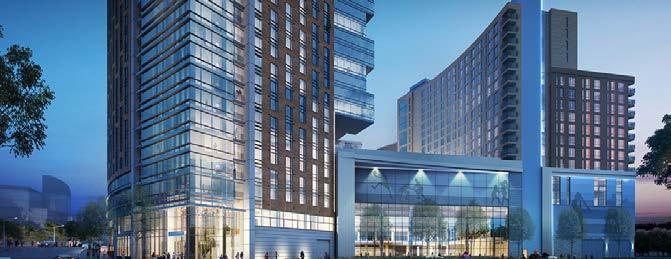
HOC’s VISION
It is our vision that everyone in Montgomery County has access to the safe, affordable, highquality housing and attendant services that they need to reach their fullest potential.
HOC’s MISSION
HOC exists to provide people with low and moderate incomes the opportunity to live in safe, affordable, high-quality housing in Montgomery County. We strengthen families by offering opportunities for personal and economic growth through partnerships and supportive services.
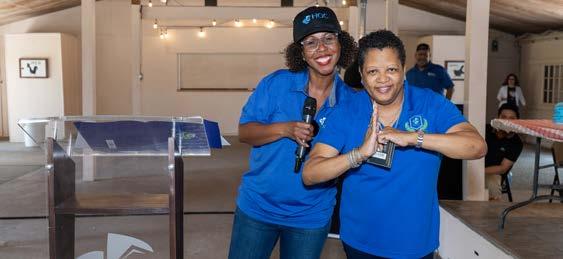
6
HOC’s CORE VALUES
HOC has identified a set of Core Values that will guide the Commission and staff’s pursuit of the outlined Strategic Plan goals and shape the strategies and policies implemented over the next five years. These include:

PEOPLE-FIRST WITH DIGNITY & RESPECT
OUR STAFF is our most valuable asset in fulfilling our vision and mission. We provide our teams with the resources and support needed to excel in their performance and roles while making HOC a competitive, great place to work and thrive.
OUR CUSTOMERS are front and center in everything we do as we create and foster opportunities for them to secure safe, affordable, and high-quality housing. We aspire to provide outstanding customer service through caring, listening, communicating, partnering, and timely responding to our customers' needs, concerns, and insights.

INNOVATIVE AND ENTREPRENEURIAL
Addressing the severe shortage of affordable housing will require agility, innovative partnerships, adoption of state-of-the-art technologies, and nationally acclaimed financial tools that create a robust portfolio of housing opportunities that incentivize resident economic mobility.

EQUITY IN EVERYTHING WE DO
Equitable access to safe, affordable and high-quality housing enables people to live with the security and comforts of home, experience community, and generate intergenerational wealth. We recognize that systemic and institutional inequities pose substantial barriers and hardships for communities of color. We commit to addressing these barriers as they impact our customers while embracing diversity, equity, and inclusion in our organization’s culture.

POWER OF PARTNERSHIPS
Collaboration with community-based, public and private sector organizations provides resources and services that empower our residents to reach their full potential, secure and maintain housing, and achieve economic independence.

COMMUNITY-ENHANCED HOUSING
When we develop, construct, and renovate properties, we are also building community and supporting sustainable neighborhoods. We cultivate social interaction among neighbors through mixed-income development, rather than isolate vulnerable households within pockets of concentrated poverty. This philosophy runs deep in everything that we do.

STEWARDSHIP
We have been entrusted to wisely manage and deploy valuable resources to create and maintain environmentally sustainable affordable housing throughout Montgomery County. We respect the public’s trust by being results-driven, accountable, and transparent in our efforts and operations while employing strategies to assure the financial solvency of HOC.
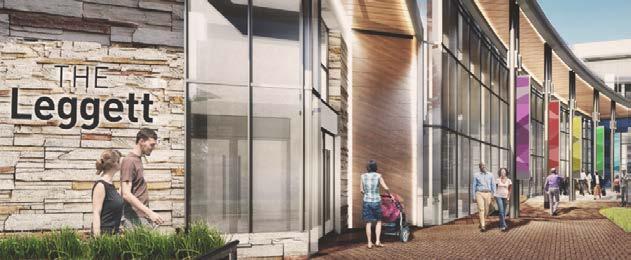
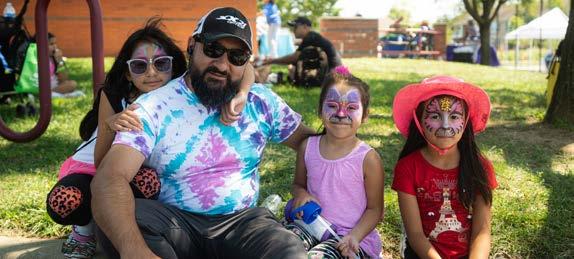
7
A GLIMPSE AT WHAT’S NEW & EXCITING IN THE NEXT FIVE YEARS

HOC has identified several innovative and exciting initiatives that we will explore over the next five years to advance our Strategic Plan. They encompass both what we do and how we do it.

Create a Nonprofit Preservation Fund (NPF)
We will partner with the county to support the preservation of naturally occurring affordable housing.
Expand the HOC Volunteer Corps Expansion will provide greater customer service and deepen community engagement.
8




This Strategic Plan is as dynamic as the Montgomery County community it is intended to serve.
As conditions and realities develop and change during the next five years, HOC will adapt and evolve our tactics and activities to ensure we remain focused on achieving the goals and objectives set forth in this plan. The goals and objectives outlined in the Strategic Plan are intended to serve as guideposts for HOC. These potential new initiatives, like everything HOC does, will require detailed feasibility and financial analyses so that the Commission can properly evaluate costs and benefits when making decisions about resource allocation and program design.

Establish a Direct Rental Assistance Program
The program would allow housing subsidies to be paid directly to recipients rather than through contracts with landlords.
Employ Artificial Intelligence
Responsible and creative AI solutions will improve operational efficiency and enhance customer service.
Invest in Advanced Data Analysis Capabilities
This investment will lead to betterinformed decision making.
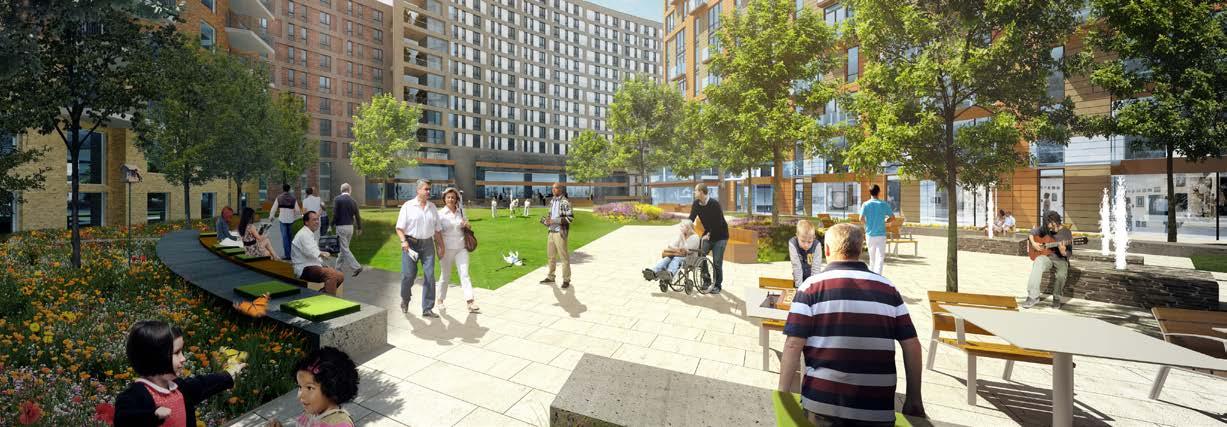
2024-2029
HOC’S THREE PRIMARY GOALS AND OBJECTIVES
EXPAND
Affordable Housing in Montgomery County
The Housing Opportunities Commission has broadly defined three goals and accompanying objectives for the five-year period of 2024-2029.
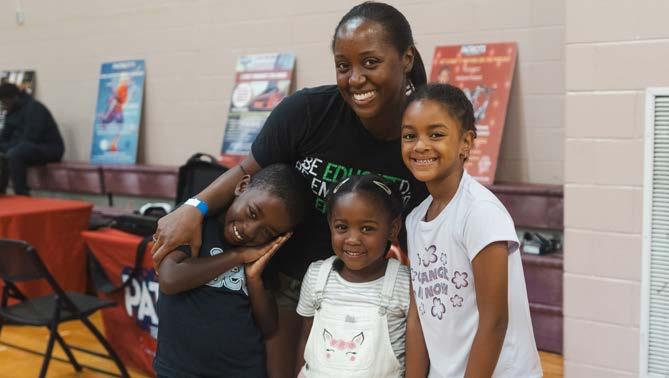
ENHANCE the Lives We Touch Through Supportive Services & Partnerships
EXCEL as a World-Class Organization
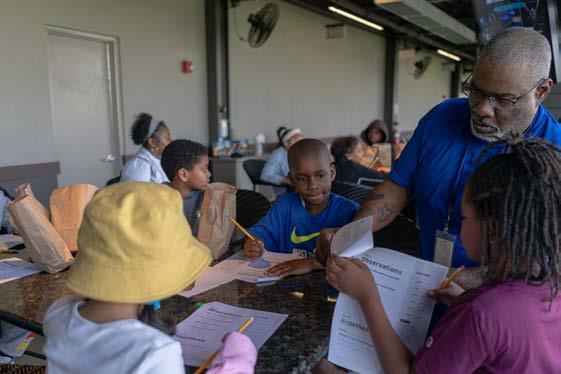
10
THE LANDSCAPE
GOAL 1 EXPAND Affordable Housing in Montgomery County
Housing is in short supply in Montgomery County and the gap between availability and need is expected to continue growing over the next five years. At the same time, the cost of that housing is expected to continue to rise, impacting the ability of families at almost all income levels to afford the housing they would prefer, but having the most severe impact on households at the lowest income levels.
STRATEGIC PLAN OBJECTIVES
HOC will maximize the amount of affordable housing available in the county by expanding our portfolio of highquality affordable housing, by ensuring that real estate decisions reflect our evolving priorities and by expanding and optimizing rental assistance for low- and moderate-income families.
GOAL 1.A
Expand HOC’s Portfolio of High-Quality Affordable Housing
OBJECTIVES
A.1 Set Clear Priorities for HOC’s Real Estate Pipeline
A.4 Grow HOC’s Financial Capacity EXPAND ENHANCE
A.2 Maximize Production of New Affordable Housing
A.3 Preserve At-Risk Naturally Occurring Affordable Housing
CORE VALUES
• Innovative and Entrepreneurial
• Community-Enhanced Housing
• Stewardship
A.1: Set Clear Priorities for HOC’s Real Estate Pipeline
Our success largely will be driven by our ability to adhere to a clear set of priorities for our real estate pipeline, whether a transaction involves the development, renovation, purchase or sale of a property. These individual priorities are interconnected and form the “root system” that will support a prosperous and thriving Montgomery County.
These priorities are:
a. Increasing the net number of high-quality affordable housing units in Montgomery County
HOC’s real estate efforts will increase the amount of affordable housing available in the county, prevent the loss of existing affordable housing (whether through preservation
11
EXCEL
efforts or maintenance and renovation that ensures that existing housing remains high-quality), or position HOC to expand or maintain affordable housing in the future.
b. Serving a target market that aligns with community needs
Real estate projects will serve a documented need in the community. Staff will provide analysis to the Commission that supports recommendations to make units age-restricted or not, the proposed mix of unit types and sizes, the proposed affordability mix, whether to include permanent supportive housing, how accessibility is integrated into design, and other relevant factors.
c. Locating property to serve the needs of the targeted resident population
HOC’s residents should have ready access to transportation, jobs, education, food, healthcare, parks, retail, and other amenities. New HOC developments either should create affordable housing in areas of opportunity that have short supply of affordable housing, or bring new investment and high-quality housing to areas of the county that have suffered from underinvestment.
d. Improving the surrounding community
HOC often is a first mover in underinvested parts of the county and our activities can serve as a catalyst in those areas for additional private investment. HOC will always seek to be a good neighbor, and will explore opportunities to provide neighborhood benefits such as additional market-rate housing, parks or open space, retail, co-located government facilities, and transportation improvements.
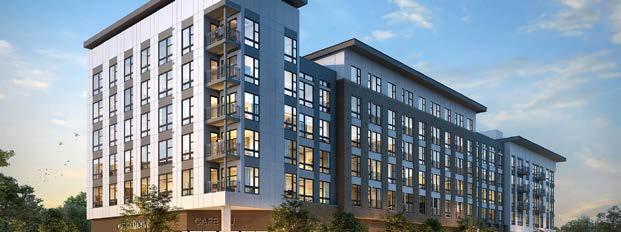
e. Furthering the county’s environmental goals
HOC has been and will remain a leader by example in delivering on the goals and best practices outlined in the county’s Climate Action Plan. Such measures include improving stormwater management, creating resiliency hubs, total building electrification, integrating renewables, promoting and increasing access to electric vehicles, and attaining Passive House and Zero Net Energy certifications whenever feasible.
f. Expanding HOC’s capacity
HOC’s real estate activities are generally revenuepositive, which ensures adequate operating margin and reserves to account for unexpected events, as well as providing a source of capital for future investments and is a critical source for ongoing agency operations. Analysis of future projects will consider how to expand and leverage HOC’s bonding capacity, access to capital, development staff, the ability to provide needed resident services and to maintain the property over the long run with reasonable debt load, as well as the potential for operational efficiencies.
g. Reducing racial disparities in the county
HOC will seek to reduce racial disparities in the county by creating opportunities in segregated areas, offering pathways for wealth building, and bringing investment into neglected communities. HOC’s activities will focus both on increasing access to areas of opportunity and increasing investment in undercapitalized parts of the county.

12
GOAL 1 EXPAND Affordable Housing in Montgomery County EXPAND ENHANCE EXCEL
A.2: Maximize Production of New Affordable Housing
HOC has a robust development pipeline, which is partially financed by the innovative Housing Production Fund (HPF). Our first HPF-financed development, The Laureate, successfully opened in Rockville, MD in 2023. We currently have identified six additional projects that are intended to be financed with the HPF over the next five years, which will add 2,416 homes to Montgomery County’s housing inventory, with 30% of the homes being affordable. With more resources, HOC could develop additional housing over the next five years (Figure 3).
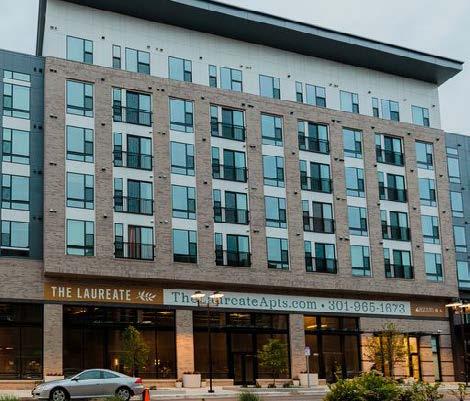
In addition to these seven HPF developments, HOC has three additional new production projects in various stages of development:
Garnkirk Farms: HOC has applied for 9% Low Income Housing Tax Credits to finance this proposed 184-unit apartment building in Clarksburg.
Heritage Emory Grove (HEG): This redevelopment project is a partnership among Montgomery
County, HOC and Emory Grove United Methodist Church. The focus of HEG is on recreating the interconnectedness of the original Emory Grove, with the interstation of Emory Grove Road and Washington Grove Lane, with Emory Grove United Methodist Church as its reaffirmed heart.
Emory Grove was originally founded by freed African Americans in 1864. At its greatest extent, Emory Grove touted some 500 residents living on 300 acres
13
$14 million $35 million $40 million $25 million 268 Units 463 Units 375 Units 415 Units 413 Units 435 Units 315 Units The Laureate Hillandale Gateway Avondale Laureate Phase 2 Forest Glen Wheaton Gateway Elizabeth House IV 2021 2022 2023 2024 2025 2026 2027 2028 2029 Planning HPF Loan Issued Building Opens Under Construction HPF Loan Repaid GOAL 1 EXPAND Affordable Housing in Montgomery County EXPAND ENHANCE EXCEL
The HPF Pipeline FIGURE 3
of land and is widely known for hosting Methodist “camp meetings” that drew tens of thousands of worshippers. It also is the location of Johnson’s Park, which was the premier lighted field in the area. Barnstorming Negro League teams, which included some of the game’s most famous players, came to Emory Grove to take on the county’s top sandlot teams. The Emory Grove United Methodist Church is one of the few remaining historical structures of the historic community.
The bulk of the property will be redeveloped and revitalized with a heavy focus on mixed-income homeownership. As proposed, HOC would act as a steward of the county property. Street grids, pedestrian connectivity, an updated community center, and Johnson’s Local Park, along with historical programming, cultural amenities, and community gardening, are all intended to help re-establish the once-familiar sense of camaraderie of the original community.
Sandy Spring Missing Middle: A proposed addition to HOC’s existing Sandy Spring Meadow property would add six duplex units, 12 triplex units, and four carriage houses, along with a 900 square-foot central community space on a 3.27 acre site. Ten of the proposed units would be Moderately Priced Dwelling Units (MPDU), and all of the units would incorporate green building principles and “low impact design techniques” like cisterns to harvest rainwater.
This pipeline is limited by available resources. In particular, the higher interest rate and higher-cost environment of 2023-2024 has caused a number of excellent private development projects in Montgomery County to stall for lack of financing. Some of these are fully entitled and ready to build, and some are positioned to proceed very quickly through the planning process.
With additional resources, HOC could take on additional new production projects within the fiveyear timeframe of this plan and seek to accelerate existing planned projects.
A.3: Preserve At-Risk Naturally Occurring Affordable Housing
Montgomery County has a large number of “Naturally Occurring Affordable Housing” units, which are not income-restricted, but are affordable at lower incomes due to their age, location or physical condition. Other properties may have income restrictions which are set to expire. HOC will seek to acquire and preserve those units which are most at-risk for significant rent increases and provide a pathway to long-term self-sustainability, whether through existing conditions, renovation, or no-netloss redevelopment.
NEW & EXCITING
One key to that effort is the new Nonprofit Preservation Fund (NPF). In 2023, HOC worked with the County Council, Montgomery County Department of Housing and Community Affairs (DHCA), and nonprofit housing providers to design the NPF, which is a revolving fund that offers 7-10 year low-interest loans to support the acquisition and preservation of the county’s naturally occurring affordable housing that is at risk of losing affordability. At the top of the priority list for the NPF are transit-oriented properties.
HOC is able to access up to 25% of the fund for its own acquisitions, with the remaining 75% reserved for nonprofits. HOC will also provide underwriting and administrative support for the fund, while DHCA will manage the fund, approve and administer the loans.
14
GOAL 1 EXPAND Affordable Housing in Montgomery County EXPAND ENHANCE EXCEL
A.4: Grow HOC’s Financial Capacity
HOC will structure its real estate and mortgage finance activities to be revenue-positive for the agency over the long term. This will ensure that HOC as an organization has a diversified revenue base that allows the organization to weather the vicissitudes in federal, state, and local subsidy streams. Such a prudent financial posture also will ensure that HOC has the resources to maintain
its growing portfolio of housing to a high-quality standard that meets the needs of the county’s residents.
This means we will continue seeking out mixedincome properties with enough market-rate units to produce adequate cash flow to sustain the property over time. It also means continuously evaluating, renovating and maintaining our portfolio so that high-quality assets are available to serve our customers for decades to come.

GOAL 1.B
Expand Housing Supply in Montgomery County
OBJECTIVES
B.1 Advocate for Adequate Resources
B.2 Advocate to Remove Barriers to Housing Production
B.3 Maximize Partnerships with Private Housing Providers
CORE VALUE
• Power of Partnerships
VALUING THE POWER OF PARTNERSHIPS
While HOC fulfills an indispensable role in making Montgomery County a more affordable place to live, the reality is that the vast majority of county residents will continue to live in private, unsubsidized housing. And as long as the county’s supply of housing falls far short of demand, families at all but the very highest income levels will struggle to find housing that meets their needs and prices will continue to rise.
HOC and the county’s efforts to provide subsidized and income-restricted housing help to reduce the impact of these market forces on low-income families, but they cannot overcome them.
15
GOAL 1 EXPAND Affordable Housing in Montgomery
EXPAND ENHANCE EXCEL
County
B.1: Advocate for Adequate Resources
HOC will develop annual Legislative Priorities to guide our work with local, state, federal and regional partners. This includes pushing for expanded funds for affordable housing production and rental assistance programs at the county, state and federal levels, including advocating for more state vouchers and advocating for federal housing vouchers to be funded as an entitlement.
B.2: Advocate to Remove Barriers to Housing Production
HOC will support policy changes that would help us meet our housing goals, provide more funding for affordable housing, and support established policies like the Metropolitan Washington Council of Government’s regional housing goals, and the county’s Thrive 2050 General Plan Update. HOC will advocate for the county to ensure zoning and development review are not barriers to adequate housing in the county.
B.3: Maximize Partnerships with Private Housing Providers
HOC will seek creative opportunities to use its authorities as the county’s Public Housing Authority (PHA) and Housing Finance Agency (HFA) to support the development of affordable housing by the private sector. HOC will explore ways to provide more support to private housing developers in the county to maximize new affordable units.
Potential initiatives include:
• Expanding the availability for private developers to use HOC’s Faircloth capacity under HUD’s Faircloth-to-RAD program to subsidize units for extremely-low-income households.
• Continuing to serve as a receiving entity for Alternative Placement agreements when DHCA allows private developers to pay a fee in lieu of developing required MPDUs usually when condominium or specialized service fees make it impractical to provide affordable units onsite.
• Using HOC’s HFA status to issue Private Activity Bonds on behalf of private developers.

16
GOAL 1 EXPAND Affordable Housing in Montgomery County EXPAND ENHANCE EXCEL
•
GOAL 1.C
Expand and Optimize
Rental Assistance
OBJECTIVES
C.1 Maximize All Available Funding for Rental Assistance
C.2 Maintain “High-Performer” Status
C.3 Create a New Direct Rental Assistance Program: HOC Bridge
CORE VALUES
• People-First with Dignity & RespectOur Customers
• Equity in Everything We Do
HOC administers six programs that provide muchneeded assistance to families to pay their rent.
During the stakeholder engagement portion of this strategic planning process, all groups involved –from residents and other HOC customers to staff and the general public – felt that additional rental assistance was needed. Community members cited the need for assistance on an “as-needed basis” to make their full rental payment. Any amount of support – expressed by those on the Wait List –would be greatly appreciated and could allow them to continue living in their current rentals.
Current Rental Assistance Programs:
The Housing Choice Voucher (HCV) program is the federal government’s principal rental assistance program available to extremely low and very low-income families, the elderly and the disabled. Federal vouchers administered by us include:
1. Housing Choice Vouchers (HCV) are by far the largest category of vouchers, generally serving households at 30% AMI or below.
2. Non-Elderly Disabled Vouchers (NED) are available for households where the head of household or spouse is disabled and between 18-62 years old.
3. Mainstream Disabled Vouchers (MSD) are available for Non-Elderly Disabled households who are homeless, at risk of homelessness or transitioning from an institutional or segregated setting.
4. Emergency Housing Vouchers (EHV) are available for households referred by the Montgomery County Department of Health and Human Services (DHHS) who are homeless, at risk of homelessness, fleeing domestic violence, dating violence, sexual assault, stalking or human trafficking, or were recently homeless or have a high risk of housing instability.
5. Veterans Affairs Supportive Housing (VASH) are for veterans who are experiencing homelessness to help them receive case management and clinical services from the Department of Veterans Affairs (VA).
6. Family Unification Program (FUP) are for families referred by DHHS for whom lack of housing risks imminent placement of a child in out-of-home care or delay of the return of a child from out-ofhome care, or eligible youths between 18-24 who are transitioning from foster care.
17
GOAL 1 EXPAND Affordable Housing in Montgomery County EXPAND ENHANCE EXCEL
HOC currently is classified as a “High-Performer” based on HUD’s evaluation of our HCV program’s management. Our rental assistance is close to full maximization, with HCV utilization consistently above 95%, and often closer to 98% of vouchers in use.
We also administer these four smaller programs funded by the county with recordation tax revenue:
1. Rent Supplement Program (RSP) is a rental assistance program serving up to 300 Montgomery County residents in obtaining and retaining their housing. Participants may receive a subsidy of up to $600 monthly for one year.
2. Move Up Initiative (MUI) is a partnership between DHHS and HOC. The program serves up to five Montgomery County residents who are participants in permanent supportive housing programs and no longer need the intensive support services, but continue to need long term housing subsidies.
3. Community Choice Homes (CCH) assists up to 45 individuals exiting nursing homes and non-elderly persons with disabilities secure housing that meets their disability needs. The program addresses barriers including insufficient income and a lack of accessible units in the county.
4. Youth Bridge Initiative (YBI) is a partnership of DHHS and HOC that provides up to five housing subsidies to youth who are aging out of foster care. The payments serve as a bridge to help the recipients move toward independence and provide up to 24 months of housing subsidies.
We are also anticipating the availability of additional vouchers funded by the State of Maryland through a new Statewide Rental Assistance Voucher Program.
Finally, a number of pilot Guaranteed Income programs and research focused on cash
assistance has raised the possibility that more direct cash assistance, rather than restricted forms of assistance (such as housing vouchers or Supplemental Nutrition Assistance Program) produces better outcomes. Cash programs are easier and cheaper to administer, easier for recipients to use, and more flexible, which allows recipients to make their own choices and set their own goals and priorities for their lives. HUD has encouraged PHAs to experiment with Direct Rental Assistance programs, although has not made federal funds available to do so.
C.1: Maximize All Available Funding for Rental Assistance
Rental assistance can — overnight — make Montgomery County affordable to a low-income family. HOC will continue to maximize program utilization across all existing programs and seize every opportunity to obtain more vouchers. HOC will advocate for more rental assistance funding from every available source.
HOC will also explore all opportunities to extend rental assistance through policy changes, operational improvements, and innovative funding partnerships. And HOC will work with its governmental partners to make housing vouchers an entitlement for all who need them, advocating for and obtaining more vouchers as they become available.
C.2: Maintain “High-Performer” Status
Through the hard work and dedication of its Housing Resources and Compliance teams, HOC is proud to have attained “High-Performer” status from HUD for its administration of federal voucher programs. HOC will continue to pursue excellence in administration and customer service for voucher holders, which ensures maximum consideration for any new vouchers that may become available from HUD.
18
GOAL 1 EXPAND Affordable Housing in Montgomery County EXPAND ENHANCE EXCEL
NEW & EXCITING
C.3: Create a New Direct Rental Assistance
Program: HOC Bridge
HOC will explore launching HOC Bridge as a new Direct Rental Assistance program.
Without the constraints of federal regulations, this local program can be designed to maximize administrative efficiency, ease of use, and result in substantial long-term benefits to recipients.
Accordingly, we will explore creating a Direct Rental Assistance program, meaning that the housing subsidy would be paid directly to recipients, rather than through a contract with a landlord. Unlike other direct cash benefit programs such as Guaranteed Income programs, the amount of the subsidy would be calculated based on what is needed to make housing affordable, in much the same way as the current HCV program.
HOC Bridge could be further leveraged by targeting local subsidy funds at households who are currently receiving a Housing Choice Voucher, but who are
toward the top end of the income spectrum for HCV recipients. One natural cohort is graduates of our Family Self Sufficiency Program. These households have already increased their income, have received years of training and education such as financial education, credit counseling, workforce development, and secondary educational opportunities. With higher incomes, they also require a lower monthly subsidy payment. If they voluntarily agree to move to a new HOC Bridge program, that would allow a federal voucher to be issued to a household from the Wait List, generally having income at 30% AMI or below and requiring a deeper subsidy. In this way, HOC Bridge would allow us to put more federal resources in the community as well.
To ensure that the program is maximally fair and attractive to voucher holders, a new HCV preference could allow HOC Bridge customers to quickly re-enter the HCV program if needed.
Because this is a new concept, HOC will explore opportunities to work with a respected academic partner to assist with program design, data collection and outcome measurement and evaluation.

19
GOAL 1 EXPAND Affordable Housing in Montgomery County EXPAND ENHANCE EXCEL

GOAL 2
ENHANCE the Lives We Touch Through Supportive Services & Partnerships
THE LANDSCAPE
In the simplest of terms, HOC — through our Resident Services Division — provides the supportive services that help our customers achieve the personal and financial stability they need to end their reliance on housing assistance.
HOC’s Resident Services Division currently offers a vast array of high-quality programs, services, and resources, many through collaborative partnerships with Montgomery County, the federal government, and various community-based organizations. These programs and robust supportive housing services are available to individuals and families who reside in HOC-owned/managed properties or receive HOC housing subsidies, as well as applicants on HOC’s Wait List.
That work is a foundational element of HOC’s mission and helps our customers establish and maintain a healthy, secure home life and build a more secure future. Montgomery County’s fast-growing population and increasing numbers of low- and moderate-income residents will require more programming resources and expanded access to those resources to thrive.
20
EXPAND ENHANCE EXCEL
GOAL 2.A
Enhance HOC’s Resident Services Programs
OBJECTIVES
A.1 Boost Awareness of Available Services
A.2 Ensure Customers’ Voices are Heard
A.3 Extend HOC’s Multilingual Resources
CORE VALUES
• People-First With Dignity & RespectOur Customers
• Equity in Everything We Do
A.1: Boost Awareness of Available Services
HOC’s Resident Services programs receive high marks from those who have taken advantage of them. Nearly 80% of HOC customers who participated in the customer survey and who used the services HOC offers have a “very positive,” “positive,” or a “somewhat positive” experience.
Through the Housing Opportunities Commission Academy (HOCA), Resident Services has developed signature programming for youth/young adults, adults, and fathers that are centered around education, career, business development, health and wellness, financial literacy, and parenting.
Adult Education and Workforce Development Program (AEWD)
AEWD helps get people ready for the world of work by connecting adults to career counseling, job readiness, small business development, employment, internships, High School Equivalency, vocational training and technology skills development.
Youth Enrichment Services (YES)
YES provides youth and young adults with afterschool and summer programs that offer innovative Science Technology Engineering Arts and Math (STEAM) programming throughout the year.
Fatherhood Initiative Program (FIP)
FIP is a federally-funded national initiative established in 2015 featuring workshop topics such as 24/7 dad workshops, financial literacy, and men’s health. HOC Academy’s Fatherhood Initiative has served more than 1,200 fathers since its inception. HOC is the first and only public housing authority to receive the Fatherhood Initiative grant from the U.S. Department of Health and Human Services Administration for Children and Families.
In a recent survey many customers indicated that they were unaware of the wide range of programs provided by HOC. HOC will work to expand communication and outreach so that customers, including those on the Wait List, are aware and able to take full advantage of the range of resident services HOC provides.

21
GOAL
ENHANCE the Lives We Touch Through Supportive Services & Partnerships
2
EXPAND ENHANCE EXCEL
A.2: Ensure Customers’ Voices are Heard
HOC will continue to maximize all stakeholders’ ability to participate in and inform the key decisions that the Commission makes. In 2023 HOC held an election for its Resident Advisory Board (RAB), which is a nine-member board that advises the Commission and staff on a wide variety of matters, including the HOC operating budget and HOC practices and procedures such as rent collection, resident grievances, evictions, HUD policies, property management, and maintenance.
That election generated robust participation and attracted nearly 100 candidates. The newly constituted RAB has begun an active schedule of meetings, briefings, and participation to fulfill its duties to HOC residents.
A.3: Extend HOC’s Multilingual Resources
HOC continually strives to ensure that its content, processes, and meetings are accessible to all. We recently updated our Language Access Plan and commit to improving the resources available to serve multilingual customers by ensuring access to appropriate translation at meetings, for written documents, and through our digital content.
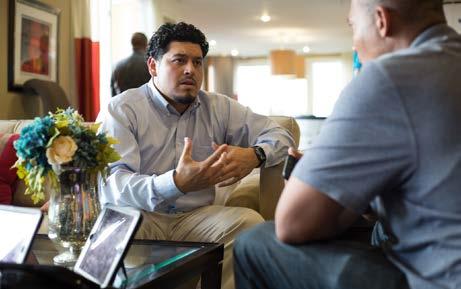

22
GOAL 2 ENHANCE the Lives We Touch Through Supportive Services & Partnerships EXPAND ENHANCE EXCEL
GOAL 2.B
Enhance Partnerships with Government and Non-Profit Partners to Provide More Services to Customers
OBJECTIVES
B.1 Deepen Partnerships with Nonprofits that Serve our Customers
B.2 Pursue Opportunities from Federal, State and Local Partners
B.3 Integrate HOC’s Application Process with Universal Screening for Benefits
B.4 Amplify Collaboration with the Homelessness Continuum of Care
CORE VALUES
• Power of Partnerships
• People-First with Dignity & RespectOur Customers
Montgomery County’s robust nonprofit sector and highly capable government agencies work well together to provide much-needed services to lowand moderate-income families. HOC already has many partnerships that bring these organizations into our communities:
• HOCA partners with organizations like Montgomery College, ACES A Wider Circle, Per Scholas, WorkSource Montgomery.
• Our Adult Education and Workforce Development (AEWD) program launched a Small Business
Development program in FY2022 for 200 customers in partnership with ALSTNEC LLC that provides business training.
• HOC’s Fatherhood Initiative partners with the Montgomery County DHHS, Montgomery College, African American Health Program and PNC Bank.
B.1: Deepen Partnerships with Nonprofits that Serve our Customers
While HOC’s primary mission is to provide housing, many of the families we serve require assistance with medical care, mental health care, food security, education and job training, transportation, and many other overlapping areas. To enhance our service delivery capacity, HOC’s Resident Services team will deepen our partnerships with existing organizations in our community that provide these services and ensure that our customers have awareness and access to the assistance they require.
B.2: Pursue Opportunities from Federal, State and Local Partners
We will continue to support initiatives that come from HUD, the State of Maryland, Montgomery County Government, and our other strategic partners, as they arise.
B.3: Integrate HOC’s Application Process with Universal Screening for Benefits
HOC will work to develop new data-sharing agreements and partnerships with key agencies like Montgomery County’s DHHS and DHCA to ensure that applicants for HOC services are aware of and easily able to apply for other services they may be eligible for through other agencies and vice versa. HOC has also extended our service provision to those on our Wait List, and we will continue to find opportunities to make relevant services available to applicants.
23
GOAL 2 ENHANCE the Lives We Touch Through Supportive Services & Partnerships EXPAND ENHANCE EXCEL
B.4: Amplify Collaboration with the Homelessness Continuum of Care
Montgomery County’s Continuum of Care is a partnership of public and private groups working together to end homelessness in Montgomery County, led by Services to End and Prevent Homelessness (SEPH) in the county’s Department of Health and Human Services. HOC administers important resources, often through referral from SEPH, such as Emergency Housing Vouchers and Permanent Supportive Housing.

GOAL 2.C
OBJECTIVES
C.1
C.2
C.3 Support Fair Housing Enforcement Efforts
NEW & EXCITING
We will explore ways to make it easier for low-income families to learn about and apply for all the benefits for which they are eligible. For example, by including screening for other benefits in our Wait List application process and by working with key Montgomery County agencies, such as the Department of Health and Human Services and Department of Housing and Community Affairs, to ensure that residents applying for benefits are able to apply for HOC programs as well.
HOC also will continue to deepen its partnership over the next five years with the Interagency Commission on Homelessness, which has set a goal to functionally eliminate homelessness in Montgomery County.

CORE VALUE
• Equity in Everything We Do
In Montgomery County, where over the past 10 years the cost of the average home has risen 42% to $582,406, homeownership for many is an unattainable aspiration. That trend of continually rising home prices is expected to continue for the next five years, largely due to a chronic undersupply of houses. Encouraging homeownership is an important objective of HOC’s Five-Year Strategic Plan.
24
Enhance Wealth-Creation and Homeownership Programs to Further Housing Equity
Create Affordable For-Sale Properties
Maximize HOC’s Mortgage Purchase Program
GOAL 2 ENHANCE the Lives We Touch Through Supportive Services & Partnerships EXPAND ENHANCE EXCEL
C.1: Create Affordable For-Sale Properties
HOC will seek opportunities to create affordable for-sale housing. Two ongoing examples are the planned development of new, for-sale product in HOC’s Heritage Emory Grove development project and the disposition of 10 scattered site townhomes to Habitat for Humanity. Those homes will be renovated and sold to low-income households.
C.2: Maximize HOC’s Mortgage Purchase Program
HOC administers several homeownership programs, chief of which is the Mortgage Purchase Program (MPP). The MPP offers lower cost mortgages to
low- and moderate-income families, a suite of down payment and closing cost assistance programs, and programs designed to assist HOC customers with transitioning to homeownership.
Over the next five years, HOC will maintain and expand its homeownership and wealth-building programs to assist customers and low- and moderateincome families across the county to purchase a home, increase their income, and build wealth.
C.3: Support Fair Housing Enforcement Efforts
We also will work with the county’s Commission on Human Rights to identify and refer cases of housing discrimination to eliminate barriers to housing equity.
GOAL 2.D
Enhance Opportunities for Applicants on HOC’s Wait List
OBJECTIVES
D.1 Improve the Application Experience
D.2 Review and Update Wait List Preferences and Policies
CORE VALUE
• People-First With Dignity & RespectOur Customers
HOC’s innovative Housing Path application was among the first in the nation to provide a 24/7, single application for all housing programs. Over the next five years, HOC must build on that foundation to improve the application and Wait List experience for its customers.
Launched in 2016, the Housing Path Wait List was intended to extend greater access to people in need of housing. Unlike other agency lists that address only individual programs, the Housing Path Wait List enables people to fill out just one application to be considered for all 20 of the HOC programs and properties for which they may be eligible.
The electronic list ensures data accuracy by keeping it perpetually open and providing applicants the ability to update their information. Applicants must recertify their interest and eligibility on an annual basis in order to remain on the Wait List.
25
GOAL 2 ENHANCE the Lives We Touch Through Supportive Services & Partnerships EXPAND ENHANCE EXCEL

In 2018, HOC established a Call Center for all inquiries, replacing the Wait List phone line. In FY2019, HOC added a property listing page on the Housing Path website enabling customers to check property details and availability outside of the Wait List.
The Housing Path Wait List includes just under 35,000 applicants, as of March 2024, and the average waiting time is 6.5 years. In the stakeholder surveys and Town Hall meetings that helped mold this Strategic Plan, feedback on opportunities to make the Wait List easier to navigate was provided.
The Wait List would be shorter if there were more money to subsidize affordable housing and if affordable housing was more readily available.
D.1: Improve the Application Experience
We commit to developing an improved experience for applicants that is easy to use, provides more clarity about what programs and properties are available, and improves their ability to connect with other essential services.
HOC will conduct an analysis of the processes and procedures governing Wait List management to identify areas where improvements can be made.
HOC will increase the use of technology to instantly update the Wait List, minimize the number of applicants who are removed for failure to respond, and provide tools which make it easier for applicants to understand the process and their status on the list.
D.2: Review and Update Wait List Preferences and Policies
HOC will re-examine the preferences and policies which apply to the Wait List to ensure that we are maximizing the use of scarce resources for those who need them most.
26
GOAL 2 ENHANCE the Lives We Touch Through Supportive Services & Partnerships EXPAND ENHANCE EXCEL
GOAL 3
EXCEL as a World-Class Organization
THE LANDSCAPE
While the scope of the challenge of providing affordable housing to all who are in need has expanded over the past many years, we have attempted to meet those needs with fewer resources. Both HOC and the Montgomery County government have developed innovative solutions to creating additional financial resources for housing in the county. At the same time, however, federal funding to support our efforts remains constrained and faces constant political threats in Congress.
The majority of HOC personnel have been with the agency for more than five years – and over a quarter for 16 years or more. But especially since COVID-19, HOC – like many employers – has experienced staffing shortages and a tighter labor market with rising wages and salaries.
For HOC to successfully address the majority of the challenges with the Wait List, as well as implement “lifeenhancing” recommendations such as increasing participation in HOC’s existing Resident Services supportive programs, we must ensure adequate staffing and improve operations and customer communications.

27
EXPAND ENHANCE EXCEL
GOAL 3.A
Excel as a World-Class Place to Work
OBJECTIVES
A.1 Refine the Hiring and Onboarding Process
A.2 Strengthen Employee Training and Resources
A.3 Foster Diversity, Equity and Inclusion
CORE VALUES
• People-First With Dignity & RespectOur Staff
• Equity in Everything We Do
HOC is committed to achieving world-class status as a housing and customer service organization and a great place to work for employees – just as it has in the finance and development field. To reach that pinnacle we will:
A.1: Refine the Hiring and Onboarding Process
Over the next five years, HOC will work to ensure that our hiring, compensation, benefits, training, and facilities lead to a place where staff are motivated, fulfilled, responsive, and wellequipped to provide the high level of service that our customers deserve. We will explore new work arrangements and compensation structures to attract workers in a new, post-COVID labormarket environment.
A.2: Strengthen Employee Training and Resources
HOC will provide ongoing training, professional development, and support to retain staff, avoid burnout, and increase productivity.
A.3: Foster Diversity, Equity and Inclusion
Montgomery County today has a majority-minority population. This has brought about a positive change in social awareness and has reshaped how the county invests in its people and communities with a concerted effort to advance housing integration.
As already discussed above, HOC customer families are substantially people and families of color (approximately 90%, two-thirds of whom are Black), almost two-thirds in female-headed households, and significantly young, with nearly half our customers under 30 and one-third under 18. This population is projected to get even more diverse in coming years, with a growing population of Hispanic families, immigrants, and seniors.
Over the next five years, HOC will ensure that our policies and procedures lead to an organization that is representative of the community it serves and culturally competent in communicating with all stakeholders. HOC will pursue hiring to ensure that HOC staff reflects and can respond best to our customers.

28
GOAL 3 EXCEL as a World-Class Organization
EXPAND ENHANCE EXCEL
3
EXCEL as a World-Class Organization
GOAL 3.B
Excel by Providing World-Class Customer Service
OBJECTIVES
B.1 Ensure Adequate Staffing Levels
B.2 Provide Additional Customer Service Training
B.3 Expand the Use of Trained Volunteers to Assist Customers
B.4 Make HOC Easy to Reach
CORE VALUE
• People-First With Dignity & RespectOur Customers
In large part, HOC is a customer-service organization. Our customers consist of residents of HOC properties, recipients of HOC vouchers for housing services in the community, and people on the Wait List to receive those services. Stakeholder feedback gathered during this planning process made clear that while many complimented the dedication of HOC’s employees, there is room for improving HOC’s ability to provide excellent service to applicants, customers, partners and the general public. To improve the customer experience we will:
B.1: Ensure Adequate Staffing Levels
Ensuring adequate staffing — which requires adequate resources — will allow staff to dedicate the time each customer deserves.

29
GOAL
EXPAND ENHANCE EXCEL
B.2: Provide Additional Customer Service Training
HOC will provide customer-facing staff with detailed training, including in topics like trauma-informed response, how to deescalate difficult situations, and effective management and communication techniques.
NEW & EXCITING
B.3: Expand the Use of Trained Volunteers to Assist Customers
HOC has a cohort of dedicated volunteers, particularly those who serve with our affiliated nonprofit Housing Opportunities Community Partners (HOCP). HOC will explore creating a new, formalized Volunteer Corps that could provide training in how to serve customers, preserve privacy, and follow procedures and then provide opportunities for volunteers to assist applicants and customers with paperwork and understanding HOC’s policies.
NEW HOC HEADQUARTERS
B.4: Make HOC Easy to Reach
HOC will ensure that its physical locations are transit-accessible and easy to reach from every part of the county. HOC currently has offices in Gaithersburg and Kensington and Customer Service Centers in Silver Spring and in the Derwood neighborhood of Rockville, approximately one block from the Shady Grove Metro station. We plan to move our headquarters from Kensington to a new facility in downtown Silver Spring in 2025, where it will be easily accessible by the Metro, bus, MARC and the future Purple Line.
HOC is undertaking a redesign of its website and digital presence to be more user-friendly, and will be expanding its Call Center operations to include additional staff resources and training.

30
GOAL 3 EXCEL as a World-Class Organization EXPAND ENHANCE EXCEL
GOAL 3.C
Excel Through Modern Technology and Data Systems
OBJECTIVES
C.1 Protect the Security of HOC’s Systems
C.2 Ensure that Technology is a Benefit, Not a Barrier
C.3 Invest in Data Analysis Capabilities
C.4 Explore the Use of AI Tools
CORE VALUE
• Innovative and Entrepreneurial
In the survey of HOC staff conducted as part of this strategic planning process, HOC employees ranked improving and modernizing IT systems and processes among the most opportunities for improvement.
A wide range of new technologies have become widely available since adoption of HOC’s last Strategic Plan, including the new Rent Café portal for voucher holders and residents, as well as many other advances. In addition to basic technologies such as email alerts, SMS/texts and online public portals, HOC will explore updating its technology and software that would allow better on-going communication with customers and be more inclusive of those with disabilities.

C.1: Protect the Security of HOC’s Systems
The security of our systems ensures privacy for our customers, employees, and applicants. HOC will follow industry standard best practices to ensure that our systems and data are protected.
C.2: Ensure that Technology is a Benefit, Not a Barrier
HOC will ensure that technology is a benefit to our operations, not a barrier. We will implement new technology to help our staff provide more assistance to more customers, and enable us to expand assistance for applicants who do not have access to or possess proficiency in technology themselves.
31
GOAL
EXCEL as a World-Class Organization
3
EXPAND ENHANCE EXCEL
C.3: Invest in Data Analysis Capabilities
HOC will strive to improve its use of data to inform decision-making and ensure HOC staffing and financial resources are modified to support programmatic decisions. HOC uses a wide variety of systems and tools for data collection, storage and management, and in the next five years will seek to integrate these systems, improve our capability for data analysis and leverage local partners with peers’ data sources to better inform decision makers and the public.
Improved data capabilities will enable HOC to better determine housing needs across the county, and better understand geographic and demographic factors, population shifts, and changes in housing supply and demand. They will also help us better collaborate with and inform community partners to foster improved outcomes for families living in HOC housing, evaluate programmatic effectiveness, and determine what objectives to pursue in future plans.
NEW & EXCITING
C.4: Explore the Use of AI Tools
We will explore the use of innovative artificial intelligence, such as Virtual Assistants, to make operations more efficient and improve the experience for customers, applicants and staff.
HOC will follow security protocols for our systems that ensure privacy for our customers, employees, and applicants. HOC will adhere to industry best practices to ensure that our systems and data are protected.

32
GOAL 3 EXCEL as a World-Class Organization
EXPAND ENHANCE EXCEL
GOAL 3.D
Excel with Transparent and Accountable Implementation of this Plan
OBJECTIVES
D.1 Develop a Detailed Implementation Plan
D.2 Create Dashboards to Track Progress
D.3 Report and Revisit the Implementation Plan Annually
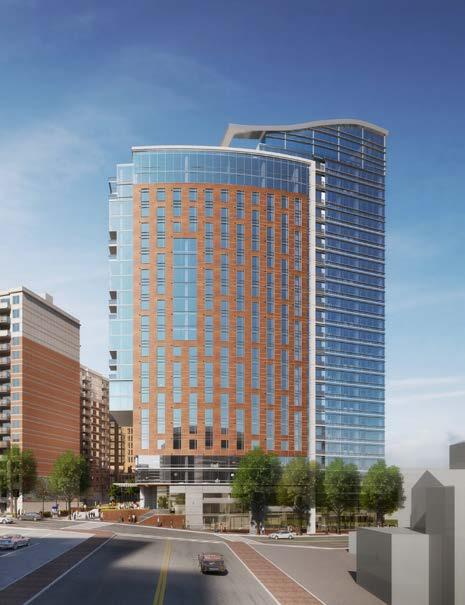
CORE VALUE
• Innovative and Entrepreneurial
D.1: Develop a Detailed Implementation Plan
HOC will develop an Implementation Plan incorporating detailed process steps, metrics, timelines, staffing needs, and budget considerations to achieve the goals and objectives laid out in this Five-Year Strategic Plan. This will be done within the context of HOC’s budget and financial position to ensure the organization maintains optimal financial health.
D.2: Create Dashboards to Track Progress
HOC will create a public dashboard that allows stakeholders to track the progress of the implementation of the Plan, along with key metrics that measure multiple dimensions of the affordability of housing in Montgomery County.
D.3: Report and Revisit the Implementation Plan Annually
HOC will report annually to the Commission and the public on the progress toward reaching these goals. This annual report will also provide an opportunity to review the timelines and action steps laid out in the Implementation Plan and adjust them as needed.
A full version of the Strategic Plan, including an appendix with references, can be found at HOCMC.ORG
33
GOAL 3 EXCEL as a World-Class Organization
EXPAND ENHANCE EXCEL
ACKNOWLEDGEMENTS
HOC acknowledges the following stakeholders for their invaluable contributions to the creation of this Five-Year Strategic Plan. Their dedication, energetic engagement, and collaborative spirit have been crucial in helping shape this guiding document for the future direction of HOC. We also extend a special thanks to the team at Public Works for their counsel, expertise and hard work throughout this 10-month process.
PUBLIC WORKS (STRATEGIC PLAN CONSULTING TEAM)
• Eric Schnurer
• Linda Rhodes
• Johnny Mack
• Kristi Guillory
• John Petro
• Jen Reiner
MONTGOMERY COUNTY GOVERNMENT
• Marc Elrich - County Executive
• Andrew Friedson - Council President
• Kate Stewart - Council Vice President
• Gabe Albornoz- Councilmember
• Marilyn Balcombe - Councilmember
• Natali Fani-Gonzalez - Councilmember
• Evan Glass - Councilmember
• Will Jawando - Councilmember
• Sidney Katz - Councilmember
• Dawn Luedtke - Councilmember
• Kristin Mink - Councilmember
• Laurie-Anne Sayles - Councilmember
HOC BOARD OF COMMISSIONERS
• Roy O. Priest - Chair
• Jeff Merkowitz - Vice Chair
• Robin Salomon - Chair Pro Tem
• Pamela Byrd - Commissioner
• Linda Croom - Commissioner
• Fran Kelleher - Commissioner
• Former Commissioners Jackie Simon and Rick Nelson
HOC STAFF
34
HOC EXECUTIVE LEADERSHIP
• Chelsea Andrews - President & Executive Director
• Kayrine V. Brown - Senior Executive Vice President
• Sean Asberry - Vice President, Maintenance
• Tia Blount - Vice President, Public Affairs & Communications
• Elaine Cole - Vice President, Human Resources/Chief Human Resources Officer
• Richard Congo - Vice President, Information Technology/Chief Information Officer
• Darcel Cox - Vice President, Compliance
• Timothy Goetzinger - Senior Vice President, Finance/Chief Financial Officer
• Lynn Hayes - Vice President, Housing Resources
• Bonnie Hodge - Chief Ombudsman Officer
• Matt Husman - Vice President, Logistics & Facilities
• Zachary Marks - Senior Vice President, Real Estate
• Aisha Memon - Senior Vice President, Legal Affairs/General Counsel
• Ali Ozair - Vice President, Property Management
• DaVida Rowley-Blackman - Vice President, Resident Services
• Ken Silverman - Vice President, Government Affairs
• Michael Somerville - Vice President, Mortgage Finance
• John Wilhoit - Vice President, Asset Management
FOCUS GROUP PARTICIPANTS
Focus group participants including senior residents and persons with disabilities, members of immigrant, African American and Latinx families, as well as Wait List applicants
ADDITIONAL THANKS
In addition to the HOC staff members, customers, and members of the public who participated in focus groups, town halls, and surveys, HOC is grateful to the following individuals for taking extra time to provide essential insight to the planning team:
• Cuvator Armstrong - Housing Committee Chair, NAACP
• Scott Bruton - Director, Montgomery County Department of Housing and Community Affairs and staff
• Jack Casey - Vice President, Meridian Investments, Inc. and team
• Jackie DeCarlo - CEO, Manna Food Center
• Anthony Featherstone - Executive Director, Worksource Montgomery
• Leslie Graham - President & CEO, Primary Care Coalition
• Shane Pollin - Founder, PS Ventures
• McLean Quinn - President, EYA
• Susie Sinclair-Smith - Executive Director, Montgomery County Coalition for the Homeless
• Paul Williams - Executive Director, Center for Public Enterprise
• The Board of Housing Opportunities Community Partners
• Members of the Montgomery Housing Alliance
35
“This
Strategic Plan is as dynamic as the Montgomery County community it is intended to serve. To meet the ever-increasing demand for affordable housing over the next five years and expand our reach and impact,
THE DELIBERATE WORK OF HOC IS NEEDED NOW MORE THAN EVER.”
CHELSEA ANDREWS President & Executive Director Housing Opportunities Commission


Visit our Strategic Plan page to learn more.
HOCMC.ORG





 ROY PRIEST Chairman Housing Opportunities Commission CHELSEA ANDREWS President & Executive Director Housing Opportunities Commission
ROY PRIEST Chairman Housing Opportunities Commission CHELSEA ANDREWS President & Executive Director Housing Opportunities Commission











































